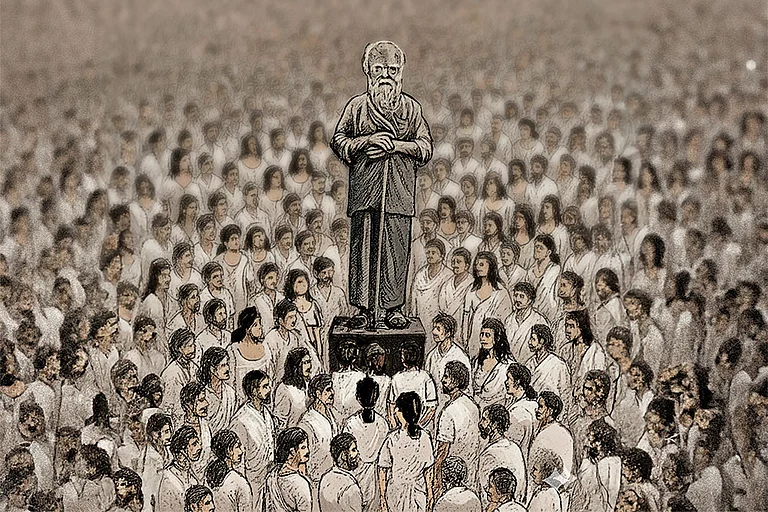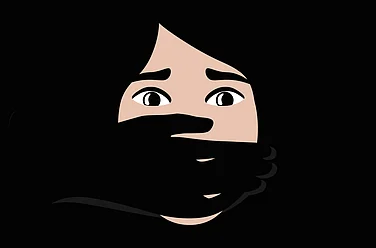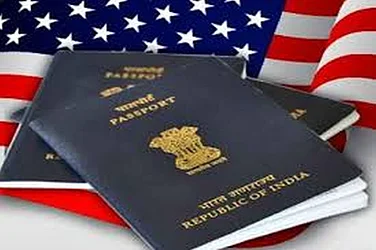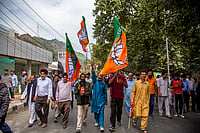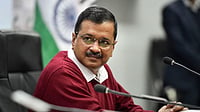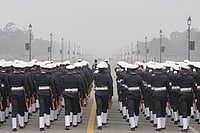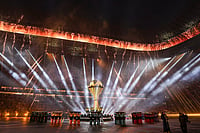This story was published as part of Outlook's 21 October 2024 magazine issue titled 'Raavan Leela'. To read more stories from the issue, click here
As the vibrant festivities of Dussehra unfold across the nation, especially in north India, with joyous chants of ‘‘Bhagwan Ram Chandra Ki Jai’’ and towering effigies of Raavan going up in flames, an intriguing counter-narrative quietly emerges.
While many revel in this age-old tradition, several groups challenge it, arguing that Raavan, often seen as the villain of the Ramayana, was actually a learned Brahmin. They claim that his burning is a “sacrilege”. These advocates not only call for a temple to worship the ten-headed Lankan king but also demand an immediate halt to the burning of Raavan effigies on Vijayadashami.
Omveer Saraswat, a Mathura-based lawyer who claims to belong to the Saraswat Brahmin community, has been advocating for a ban on the burning of Raavan effigies for years. He asserts that Raavan was a Saraswat Brahmin and that burning his effigies “hurts” those who worship him.
“Burning of Raavan effigies hurts our (Saraswat Brahmins’) religious sentiments,” he says, emphasising that they are also citizens of the country and that the Constitution guarantees religious freedom to everyone.
Referring to Hindu texts like the Srimad Bhagwat Puran, which acknowledge Raavan’s wisdom, Saraswat urges an end to the practice.
Earlier, he wrote to the then President Ram Nath Kovind, former Chief Justice Dipak Misra, Prime Minister Narendra Modi and Uttar Pradesh Chief Minister Yogi Adityanath, noting that many communities venerate Raavan. He cited a large idol in Mandsaur in Madhya Pradesh and a temple in Bisrakh in Uttar Pradesh, where devotees pray to him. Additionally, he highlighted accidents during Dussehra celebrations to support his call for a ban, arguing that Raavan, an “exceptional politician” and a “highly educated” Brahmin, is punished each year for a “mistake made centuries ago”.
Agra resident Vishal Sharma, an IT consultant, noted that Hinduism is an ever-evolving religion with diverse traditions. He mentioned that many Brahmins oppose the burning of Raavan’s effigies, viewing him as a learned Brahmin. “I never advocated for this tradition of Raavan effigy burning to stop as he was an unsavoury character. Demanding a temple to worship him is also not justified as he was not a God. But killing Raavan, who was a Brahmin, was a Brahma hatya (Brahma’s killing),” he says.
On the 10th day of Dussehra, while Raavan’s effigies are burned amid chants of Ram, a group gathers at a century-old Dashanan temple in Kanpur, Uttar Pradesh, with a five-foot idol of Raavan, shouting “Lankapati Naresh Ki Jai Ho” and “Jai Lankesh” to seek the demon king’s blessings. The temple opens once a year for devotees to perform Raavan’s puja and after the effigy is set ablaze, the doors close until the next Dussehra. This clash of perspectives raises intriguing questions: was the ten-headed king, who even compelled Shiva to acknowledge his wisdom, truly a Brahmin? If so, why did such a learned figure abduct Sita, Ram’s wife?
MORE FROM THIS ISSUE
Originally known as Raven, meaning “a bird with a blue throat” in Gondi, Raavan served as his clan’s totem. Scholars suggest the Aryans appropriated him by renaming him Raavan. While Aryan texts depict his father, Vishrava, as the son of Pulastya, critics argue that a non-Aryan like Vishrava could not be linked to Brahma, an Aryan figure. Many believe Raavan was not purely a Brahmin but a blend of a Brahmin and a demon. His father, Vishrava, was a Brahmin sage, and his mother, Kaikasi, was an Asura princess. With a lineage that included Pulastya, one of the Saptarishis, and Sumali, the king of the Rakshasas, Raavan became a renowned scholar of the Vedas and a master of astrology and statecraft. As the demon king of Lanka, he even performed the rites of a purohit (priest) during the construction of Rama Sethu.
(This appeared in the print as 'Build Me A Temple')









